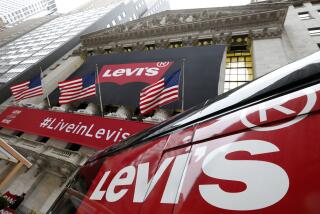Bausch & Lomb to Consolidate Unit, Cut 7% of Jobs
- Share via
NEW YORK — Bausch & Lomb Inc. said Wednesday it will consolidate its contact lens manufacturing unit and cut 7% of its jobs worldwide in a move it said will sap near-term earnings but boost future financials.
The restructuring, which comes only a few months after the global eye-care giant divested nonstrategic businesses to focus on building its vision care unit, will lead to a $56-million pretax charge, or 61 cents per share, in the fourth quarter.
A Bausch & Lomb spokeswoman, however, said that the restructuring, which will cut 850 jobs over the next 12 months, is expected to improve operating earnings by 10 cents per share for 2000.
Bausch & Lomb said it identified the additional cost reductions during its divestitures earlier in the year, which included the sale of its Ray-Ban sunglasses line.
Shares of Bausch & Lomb rose $4.19 to close at $59 on the New York Stock Exchange.
The share price is still well below a peak of $84.75 reached in May, just before the Food and Drug Administration warned the company about advertising claims on its PureVision contact lenses. By mid-October, share prices had slipped into the mid-50s around the time when the company announced its third-quarter results.
Bausch & Lomb said that most of the fourth-quarter charges announced Wednesday will be associated with employee severance pay and capital equipment write-offs.
Of the 850 jobs to be cut, 600 will come from its contact lens business in Rochester, N.Y., its oldest manufacturing facility. The remaining 250 will be spread throughout Bausch & Lomb’s global locations.
The company, which employs 12,000 workers worldwide, has also implemented a voluntary severance program for certain employees not affected by the cutbacks.
Bausch & Lomb said it will continue to focus on its contact lens business and evaluate its older products to determine whether they should be eliminated. Those actions could result in additional pretax charges of up to $15 million by the end of the year 2000.
More to Read
Inside the business of entertainment
The Wide Shot brings you news, analysis and insights on everything from streaming wars to production — and what it all means for the future.
You may occasionally receive promotional content from the Los Angeles Times.










